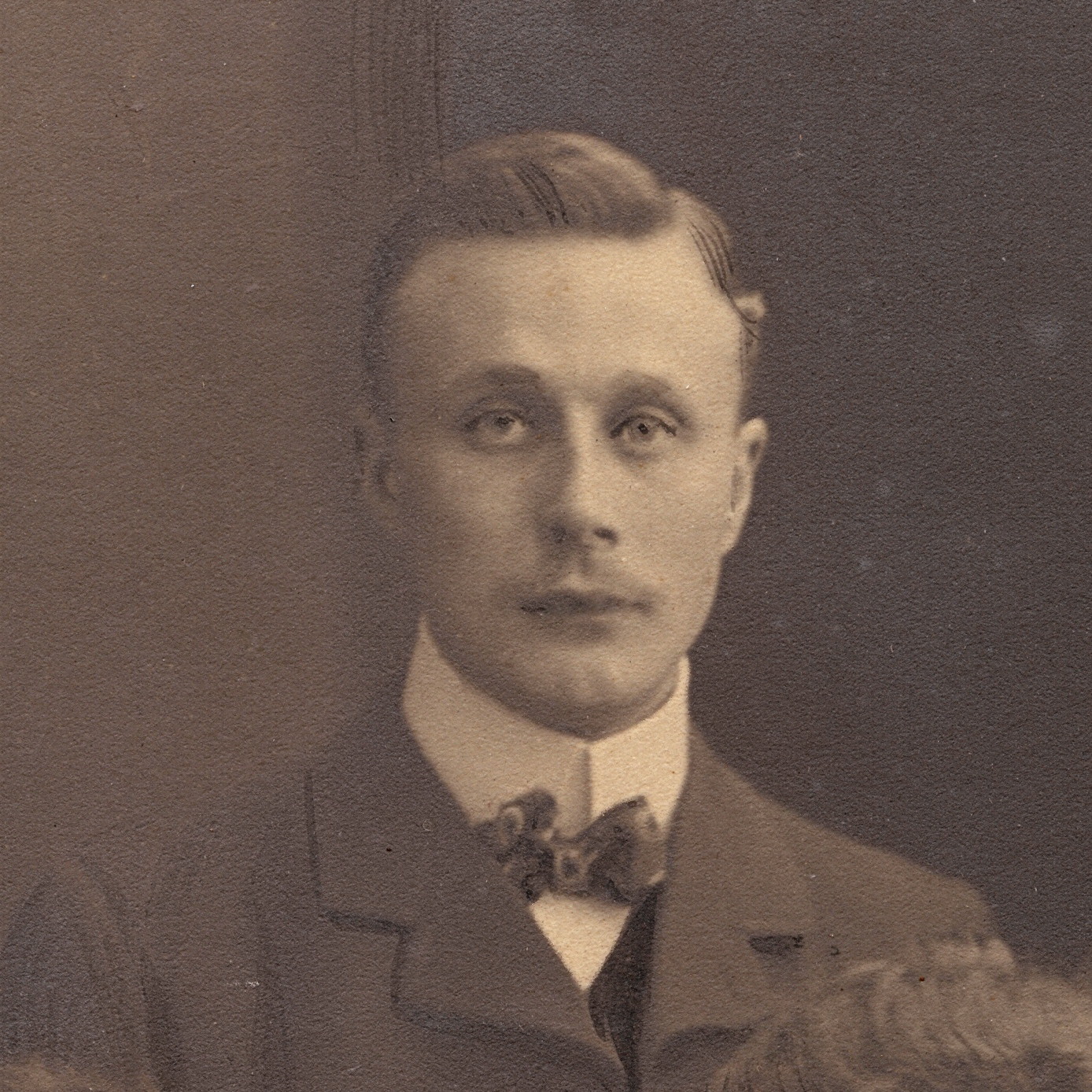Pte
Douwe Fredrik Puncke
Information about birth
|
Date of birth: 30/06/1880 |
|
Place of birth: Amsterdam, Noord-Holland, The Netherlands |
General information
|
Profession: Farmer |
|
Religion: Lutheran |
Army information
|
Country: Canada |
|
Force: Canadian Expeditionary Force |
|
Rank: Private |
|
Service number: 447828 |
|
Enlistment date: 04/11/1915 |
|
Enlistment place: Calgary, Alberta, Canada |
|
Units: — Canadian Infantry, 50th Bn. (Calgary) (Last known unit) |
Information about death
|
Date of death: 26/10/1917 |
|
Place of death: Heine House, Passchendaele, Belgium |
|
Cause of death: Killed in action (K.I.A.) |
|
Age: 37 |
Memorial
|
Ypres (Menin Gate) Memorial Panel: 30 F |
Distinctions and medals 2
|
British War Medal Medal |
|
Victory Medal Medal |
Points of interest 3
| #1 | Place of birth | ||
| #2 | Enlistment place | ||
| #3 | Place of death (approximate) |
My story
Douwe Fredrik Puncke was born on 30 June 1880 in Amsterdam, Noord-Holland. He married Johanna Ter Beek. Together they had one child. Douwe moved to Canada in late 1912, where he started farming. On 4 November 1915, he reported to Calgary, Alberta, Canada. Douwe had already served a year in the Dutch army and was now assigned as a private to the 50th Battalion Canadian Infantry, part of the 10th Canadian Brigade, of the 4th Canadian Division.
On 26 October 1917, during the Canadian opening attack at Passchendaele, the 4th Division advanced to the heights of the infamous village. Advancing through the swampy valley proved impossible. The division could only attack with one battalion. Only a narrow strip along the railway line and the road from Broodseinde to Passchendaele proved dry enough. The front of the 46th Battalion (South Saskatchewan) was barely 550 metres wide and dominated by several German pillboxes. The 46th suffered heavy losses and would eventually lose 70% of its men. Douwe's battalion the 50th (Calgary) was in the second line. At 9.40 am, it was sent forward in support of the 46th. Together they managed to take Decline Copse, the first objective of the attack, but otherwise there was no way through. After noon, German artillery fire increased and a German counterattack forced the 46th to retreat through the 50th's line to positions some 500 metres from their starting point under heavy machine-gun fire. That night Douwe's battalion went in search of wounded, but German artillery fire hampered the operation.
Douwe Fredrik Puncke, 37, was killed in action on 26 October 1917. Private Puncke was initially buried at Heine House on 28.D.11.c.80.30. His remains were not found or identified after the war. Douwe Fredrik Puncke has no known grave and is commemorated on panel 30 F of the Menin Gate Memorial.
On 26 October 1917, during the Canadian opening attack at Passchendaele, the 4th Division advanced to the heights of the infamous village. Advancing through the swampy valley proved impossible. The division could only attack with one battalion. Only a narrow strip along the railway line and the road from Broodseinde to Passchendaele proved dry enough. The front of the 46th Battalion (South Saskatchewan) was barely 550 metres wide and dominated by several German pillboxes. The 46th suffered heavy losses and would eventually lose 70% of its men. Douwe's battalion the 50th (Calgary) was in the second line. At 9.40 am, it was sent forward in support of the 46th. Together they managed to take Decline Copse, the first objective of the attack, but otherwise there was no way through. After noon, German artillery fire increased and a German counterattack forced the 46th to retreat through the 50th's line to positions some 500 metres from their starting point under heavy machine-gun fire. That night Douwe's battalion went in search of wounded, but German artillery fire hampered the operation.
Douwe Fredrik Puncke, 37, was killed in action on 26 October 1917. Private Puncke was initially buried at Heine House on 28.D.11.c.80.30. His remains were not found or identified after the war. Douwe Fredrik Puncke has no known grave and is commemorated on panel 30 F of the Menin Gate Memorial.
Sources 6
|
McCarthy, Chris. Passchendaele: the Day-by-Day Account. (Londen: Unicorn Publishing Group, 2018), 145-146. Sources used |
|
Personnel Records of the First World War (Library and Archives Canada, Ottawa (LAC), RG 150, Accession 1992-93/166, Box 8021). https://library-archives.canada.ca/ Sources used |
|
War diaries - 50th Canadian Infantry Battalion (Library and Archives Canada, Ottawa (LAC), RG9-III-D-3, Volume number: 4941, Microfilm reel number: T-10747--T-10748, File number: 441). https://library-archives.canada.ca/ Sources used |
|
War Graves Registers: Circumstances of Death (Library and Archives Canada, Ottawa (LAC), RG150, 1992-93/314, 191, Volume 31829_B016745, Microform 47, 1375-1376. https://library-archives.canada.ca/ Sources used |
|
War Graves Registry: Commonwealth War Graves (Library and Archives Canada, Ottawa (LAC), RG150, 1992-1993/314, Box 39-244; Box: 113). https://library-archives.canada.ca/ Sources used |
|
Wheeler V.W., The 50th Battalion in No Man’s Land (Ottawa, CEF Books, 2000). Sources used |
More information 3
|
Commonwealth War Graves Commission Database https://www.cwgc.org/find-records/find-war-dead/casualty-details/1595405 |
|
Namenlijst (In Flanders Fields Museum) https://namenlijst.org/publicsearch/#/person/_id=def94cf0-dacd-41d3-a217-02d8b6e93f36 |
|
The Canadian Virtual War Memorial https://www.veterans.gc.ca/eng/remembrance/memorials/canadian-virtual-war-memorial/detail/1595405 |
